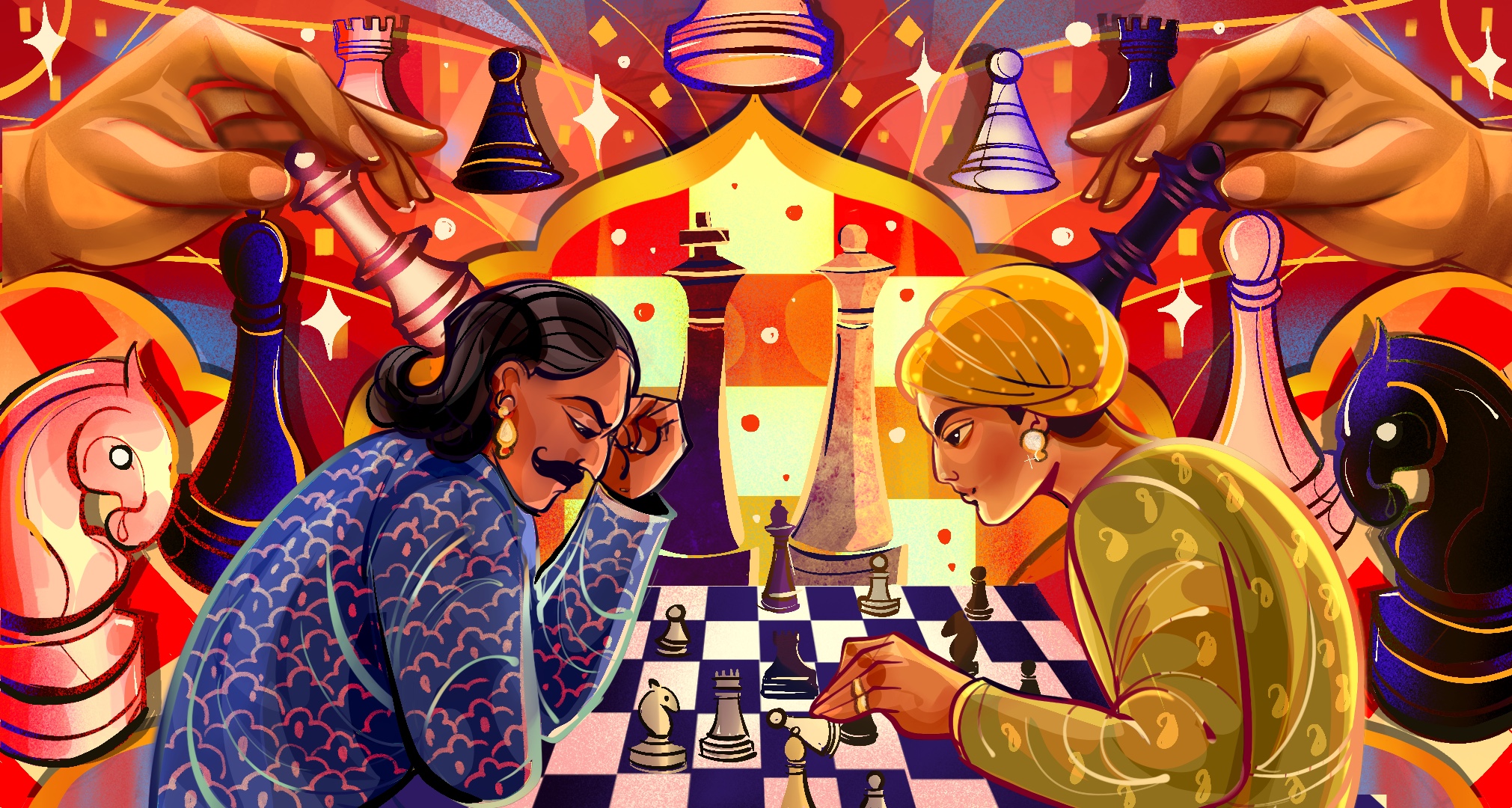The origin of chess is a puzzle wrapped in the mists of time, but one thing is clear, its roots trace back to the enchanting landscapes of ancient India. While debates continue over its exact origins, the game's significance is undeniable, capturing hearts and minds across continents and centuries.

IndiaFirst Life Elite Term Plan

IndiaFirst Life Radiance Smart Invest Plan

IndiaFirst Life Elite Term Plan

IndiaFirst Life Radiance Smart Invest Plan

IndiaFirst Life Radiance Smart Invest Plan

-
Term Insurance
-
Term Insurance Plans
-
Income Based Term Plans
-
Term Insurance Coverage Options
Term Insurance Coverage Options

-
Term Insurance for EveryOne
-
Term Insurance For Coverage for all Ages
Term Insurance For Coverage for all Ages

-
Term Insurance Calculator
Term Insurance Calculator

-
Term Insurance Riders
Term Insurance Riders

-
Term Insurance Plans
-
Life Insurance Plans
-
Term Insurance Plan
-
ULIP Plans
-
Savings Plans
-
Retirement & Pension Plans
-
Guaranteed Returns Plans
-
Life Insurance Rider
-
Group & Corporate Life Insurance Plans
Group & Corporate Life Insurance Plans

-
Child Insurance Plans
Child Insurance Plans

-
Term Insurance Plan
-
Tools & Calculators
-
Learn
-
Claim
-
Support
-
$ Plans for NRI’s

No results for
Check that your search query has been entered correctly or try another search.

Let Us know a suitable time for you.
Ask an Expert to Buy Life Insurance
We're happy to know that you're prioritizing your family's future. Our life insurance expert will assist you in finding the best insurance plan. To schedule a call, please share some of the below details.
Male
Female
Other

Thank for submitting your details
Your insights play a crucial role in helping us improve and enhance our services.
20 Feb 2024
Checkmate Time Travel: From Ancient India to Your Living Room

Introduction
Ancient Indian Genesis: Chaturanga's Birth
The earliest precursor to modern chess was a war game called chaturanga, mentioned in the Indian epic Mahabharata. Flourishing in northwestern India by the 7th century, chaturanga exhibited two crucial features found in all future chess variants – distinct powers for different pieces and victory hinging on the king, a fundamental element in today's chess.
The Evolution into Shatranj
The evolution of chaturanga into Shatranj, a two-player game popular in northern India, Pakistan, Afghanistan, and parts of Central Asia after 600 CE, added a new piece called firzān. This counsellor, unrelated to troop formations, brought fresh dynamics to the game. Shatranj spread eastward, with chess-like games reaching China by 750 CE and later finding their way to Japan and Korea.
As the game travelled west, it underwent transformations on its journey to Europe. Persian, Byzantine, and Arabian influences played pivotal roles. Chess found its way into Europe through various channels, including the expanding Arabian empire, introducing a new era of strategic gaming.
Muslims brought chess to North Africa, Sicily, and Spain by the 10th century, and Eastern Slavs spread it to Kievan Rus. Vikings carried the game to Iceland and England, are to be believed responsible for the most famous collection of chessmen that were found on the Isle of Lewis, discovered in the Outer Hebrides and dating back to the 11th or 12th century.
Chess - The Royal Game
Despite periodic bans by kings and religious leaders, chess persisted, becoming associated with wealth, knowledge, and power. Kings and monarchs, including Louis IX, Henry I, Henry II, John, Richard I, Philip II, Alfonso X, and Ivan IV, embraced the royal game. Its allure grew, earning the moniker "royal game" by the 15th century.
The standardisation of rules occurred gradually, with regional variations persisting. By 1300, the pawn gained the ability to move two squares on its first turn. Crucial rule changes after 1475, including the transformation of the counsellor into the modern queen, catapulted chess into a new era. The addition of castling and en passant capture, known since the 15th century but widely adopted in the 18th century, further enriched the game.
The Unification of Rules
The appearance of chess pieces also underwent transformations, from simple designs before 600 CE to ornate figurative sets depicting animals, warriors, and noblemen. Muslim sets of the 9th–12th centuries, adhering to Islamic prohibitions, often featured nonrepresentational pieces. As chess spread to Europe and Russia, stylised sets adorned with precious stones returned to fashion.
The modern era of chess sets was ushered in around 1835 with the Staunton pattern, a simple design endorsed by Howard Staunton, the world's best player at the time. This design, patented in 1849, remains the standard for international competitions today.
Conclusion
An Indologists' group concluded that chess originated in Kannauj when it was the capital of the Maukhari kingdom in the 6th century. Despite claims of its existence in ancient Egypt, the chess played by Egyptians differed significantly from the modern game we know today. Chess's journey from ancient India to the global stage is a testament to its enduring appeal, captivating players worldwide and standing as a symbol of strategy, intellect, and cultural richness. As we celebrate this timeless game, let's remember its Indian roots and the profound impact it has had on shaping the world of strategic gaming.
References
Britannica
https://www.britannica.com/topic/chess/History
Times of India - (Akhilesh Kumar Singh - Mar 9.2007)
https://timesofindia.indiatimes.com/india/chess-originated-from-up/articleshow/1738492.cms
Find Your Favorite Topic
Subscribe to our Life+ newsletter for exclusive updates & smart financial guidance
विशेष अपडेट और स्मार्ट वित्तीय मार्गदर्शन के लिए हमारे लाइफ+ न्यूज़लेटर की सदस्यता लें
વિશિષ્ટ અપડેટ અને કુનેહભર્યા નાણાંકીય માર્ગદર્શન માટે અમારા લાઈફ+ ન્યૂઝલેટરને સબસ્ક્રાઈબ કરો
ప్రత్యేకమైన నవీకరణలు & స్మార్ట్ ఫైనాన్షియల్ గైడెన్స్ కోసం మా లైఫ్ + న్యూస్ లెటర్ సభ్యత్వాన్ని పొందండి.
निवडक अपडेट आणि उत्तम आर्थिक मार्गदर्शन मिळवण्यासाठी आमच्या लाईफ+ बातमीपत्राचे सदस्यत्व घ्या
பிரத்தியேக புதுப்பிப்புகள் மற்றும் ஸ்மார்ட் நிதி வழிகாட்டலுக்கு எங்கள் வாழ்க்கை + செய்திமடலுக்கு குழுசேரவும்

Thank you for subscribing to Life+ Newsletter!
Keep an eye on your inbox-great things are coming your way









